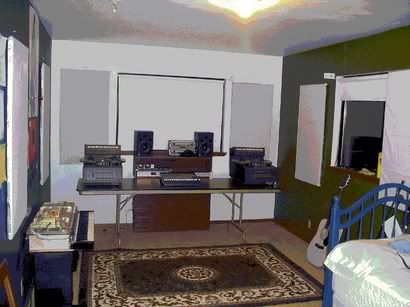If you can do the construction and can't tolerate any more absorbtion, try building a modified polycylindrical diffusor on the tops of the walls. It's basically just a couple of wood slats screwed to the wall say 6-7' apart. Cut a slot at an angle in them. Then take a piece of something like 1/4 or 1/8" plywood that's 8' long (cut to whatever width your slats are high - usually a foot or so in this application.)
Bend the plywood so it will slide into the 2 slots you cut leaving the center bowed out. Fill the gap behind with fluffy fiberglass. While not a tru random diffusor, it will disperse sound equally in all directions and also be fairly effective down pretty low in comparison with a QRD or slotted diffusor - and it's a lot easier and cheaper to make.
If you do these high on all 4 walls and kill the vertical corners, you'll go a long way to killing a lot of the slap in the room and making it more controllable. Most people forget about the stuff up higher on the walls.
Bryan



